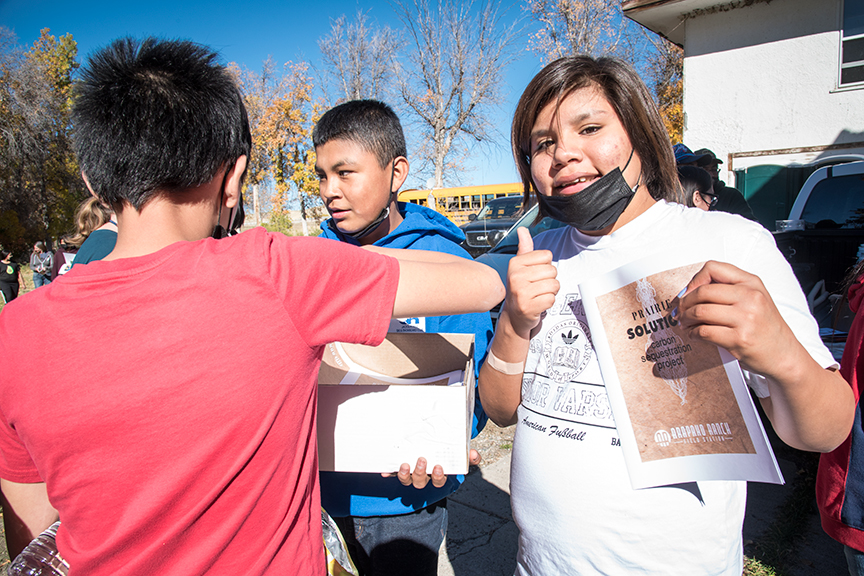The Prairie Solution project is an integrated grassland management plan through which we work with Wind River Reservation youth to seed native prairie grasses and wildflowers at Arapaho Ranch.
Over time, our continued annual planting of native prairie seeds will slowly restore Arapaho Ranch’s grasslands: The most important resource for wildlife habitat, livestock range, carbon sequestration, and healthy soils.
The Prairie Solution: Day 1
On project kick-off day in the fall of 2022, students and teachers from Wyoming Indian Schools traveled two hours to the Field Station to help distribute mixed-grass prairie seeds in a specific pocket prairie at the Arapaho Ranch.
Together, students measured seeds, broke the ground surface with Garden Weasels, flagged and seeded 10’ squares, then brushed dirt over the seeds with branches to create the seed-to-soil contact needed for germination.
It will take two to three years to see the full growth of the mixed prairie grasses, which means we could see new growth emerging as soon as the fall of 2024!

Why is it important to grow new grasslands?
Grasslands once covered one-third of the earth, supporting ungulates, other wildlife, and the underground environments to generate the healthy soils that have been squandered with industrial agriculture practices.
Plains Indians are inextricably linked to the grasslands of the North American Great Plains, as are the ungulates that once moved in large herds north and south on the Great Plains. In fact, you’ll find many traditional hunting traps and buffalo jumps all over the Wind River Reservation.
Ungulates, primarily the bison, once kept the Great Plains healthy and productive. However, today’s modern highways and cars have severed the ungulates’ great migratory paths. With the reduction of great herds of bison, elk, deer, and antilope, the grasslands have continued in natural succession to become full of sagebrush and give way to woodland encroachment and, in some areas, become deserts.
What are the benefits of grasslands?
Through regenerative agriculture practices, we’ve learned that prairie grasses grow intense root systems, and those root systems are the most stable storage of carbon (carbon sequestration).
Additionally, deep-rooted perennial grasses prevent erosion, build soil health, and store water in the ground, bringing back small inland water cycles (green water cycles) that can generate up to 40% more water for the Great Plains.

Prairie Packages: Bring the beauty of the Wyoming prairie into your own backyard
We’re excited to partner with Wind River Seed to develop Prairie Packages: Formal plantings of beautiful Wyoming prairie grasses and flowers. There are post box, front porch, and corner planting packages available.
Prairie Packages will go on sale in summer 2023, ready for planting in late fall 2023.
(Be sure to sign up for our newsletter below, so you’ll be the first to know when the seeds are available for purchase!)
Regenerating grassland is just the beginning!
For more information about our plans for the future of the Arapaho Ranch Field Station, click here.
The same teachers that brought students to the Ranch in October 2022 will bring students in October 2023 to continue the prairie planting project. We are glad to see the Prairie grass we planted with the Wyoming Indian Students in 2022 is growing in this extra wet summer and will be ready for another 90 kids to come and work with us in October 2023. We hope to engage more grade levels and schools in the seeding season ahead.

